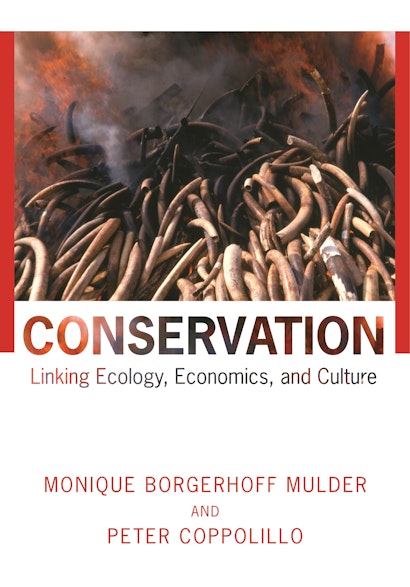Nearly 90 percent of the earth’s land surface is directly affected by human infrastructure and activities, yet less than 5 percent is legally “protected” for biodiversity conservation—and even most large protected areas have people living inside their boundaries. In all but a small fraction of the earth’s land area, then, conservation and people must coexist. Conservation is a resource for all those who aim to reconcile biodiversity with human livelihoods. It traces the historical roots of modern conservation thought and practice, and explores current perspectives from evolutionary and community ecology, conservation biology, anthropology, political ecology, economics, and policy. The authors examine a suite of conservation strategies and perspectives from around the world, highlighting the most innovative and promising avenues for future efforts.
Exploring, highlighting, and bridging gaps between the social and natural sciences as applied in the practice of conservation, this book provides a broad, practically oriented view. It is essential reading for anyone involved in the conservation process—from academic conservation biology to the management of protected areas, rural livelihood development to poverty alleviation, and from community-based natural resource management to national and global policymaking.
Awards and Recognition
- Winner of the 2008 Gerald L. Young Book Award in Human Ecology
Monique Borgerhoff Mulder is Professor of Anthropology at the University of California, Davis. Her research and teaching span behavioral ecology, anthropology, and conservation and development. Peter Coppolillo received a Ph.D. in Ecology from the University of California, Davis, and now works for the Wildlife Conservation Society, directing the Rungwa-Ruaha Landscape Conservation Program in central Tanzania.
"Balancing the rights of local people with the obligation to preserve viable ecosystems for future generations is the single most pressing challenge confronting global citizens in the twenty-first century. In this book, Borgerhoff Mulder and Coppolillo provide a lucid and admirably interdisciplinary synthesis of anthropological, biological, and economic perspectives essential to scientifically enlightened dialogue in this domain. Conservation: Linking Ecology, Economics, and Culture grew out of a pioneering course titled 'People and Conservation,' but this unique synthesis will be as helpful to policy makers and park managers as it will be to teachers and students interested in conservation biology and anthropology. It is a book that deserves to be widely adopted."—Sarah B. Hrdy, author of Mother Nature: A History of Mothers, Infants, and Natural Selection
"This is an excellent and much needed book that finally brings together the social and anthropogenic insights needed to push conservation biology to a higher and more pragmatic level. I was hooked from the preface on, and found interesting and thoughtful ideas throughout."—Andrew P. Dobson, Princeton University
"This is an extremely interesting, well-written, wide-ranging, and very timely book. It covers a vast range of literature at the crucial yet rarely synthesized interface of biology and the social sciences, and should be very widely read. It is particularly helpful in the way it sets out the background to key debates, clearing up often-confused terminology and muddled concepts."—Andrew Balmford, University of Cambridge
"This book clearly and expertly elucidates the fact that the lessons from previous mistakes and successes in the relatively young field of conservation biology can point the way toward a more systematic, more comprehensive, and more socially acceptable approach when dealing with present and future conservation endeavors. It will be of great value to anyone sincerely interested in how humans can live with wildlife and wild places, and to professionals who seek answers to the difficult questions regarding how to go about conservation."—Alan Rabinowitz, Wildlife Conservation Society
"This book offers an astonishingly diverse, unprecedented compilation of information on efforts to balance biodiversity conservation with local development. Bridging a range of disciplines, the authors move fluidly from the history of U.S. environmentalism to contemporary efforts across the globe, from international treaties on climate change to case studies of indigenous management. This book belongs on the core reading list for university programs on conservation biology, sustainable development, and international environmental affairs."—Lisa Naughton, University of Wisconsin, Madison

